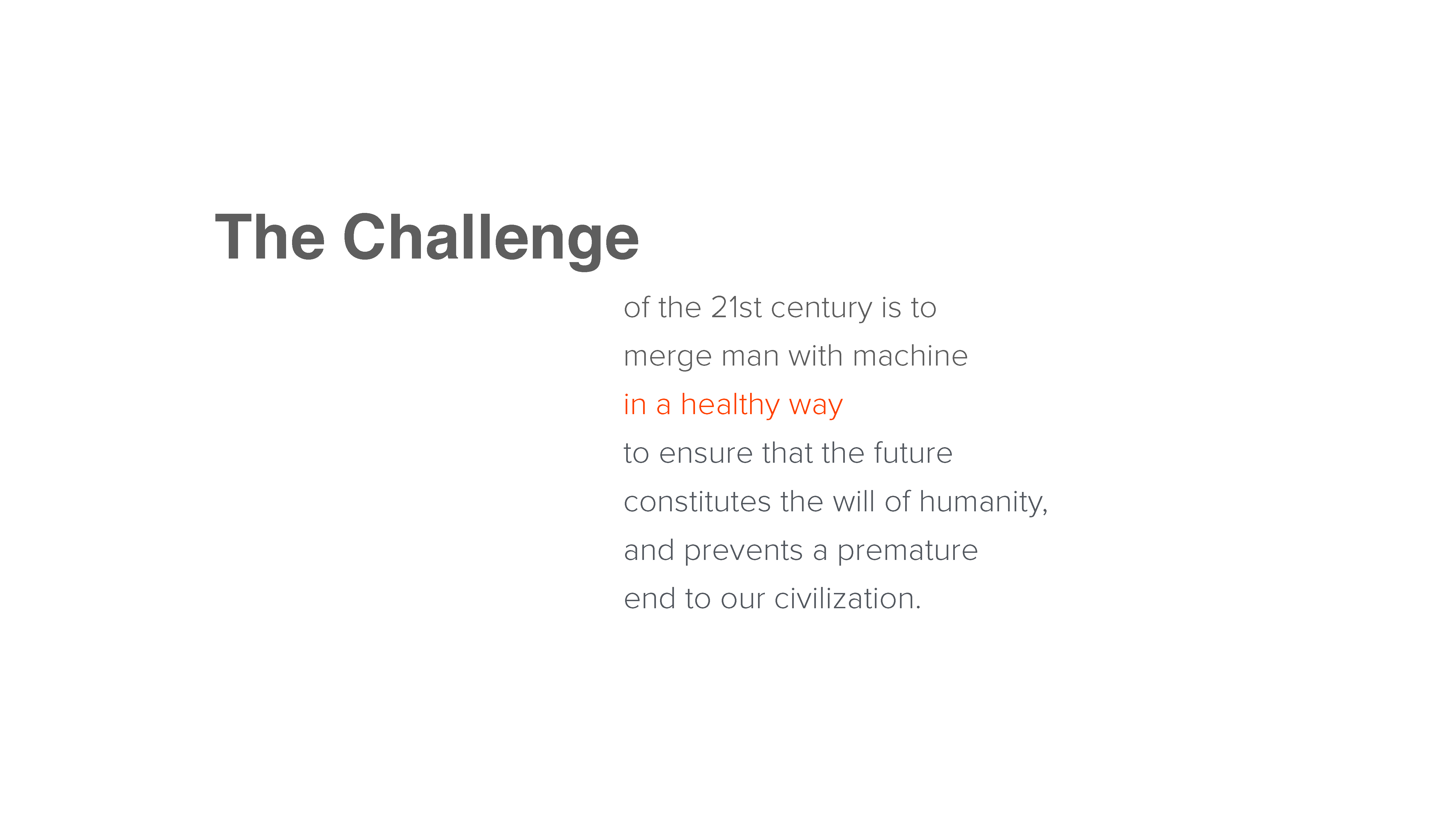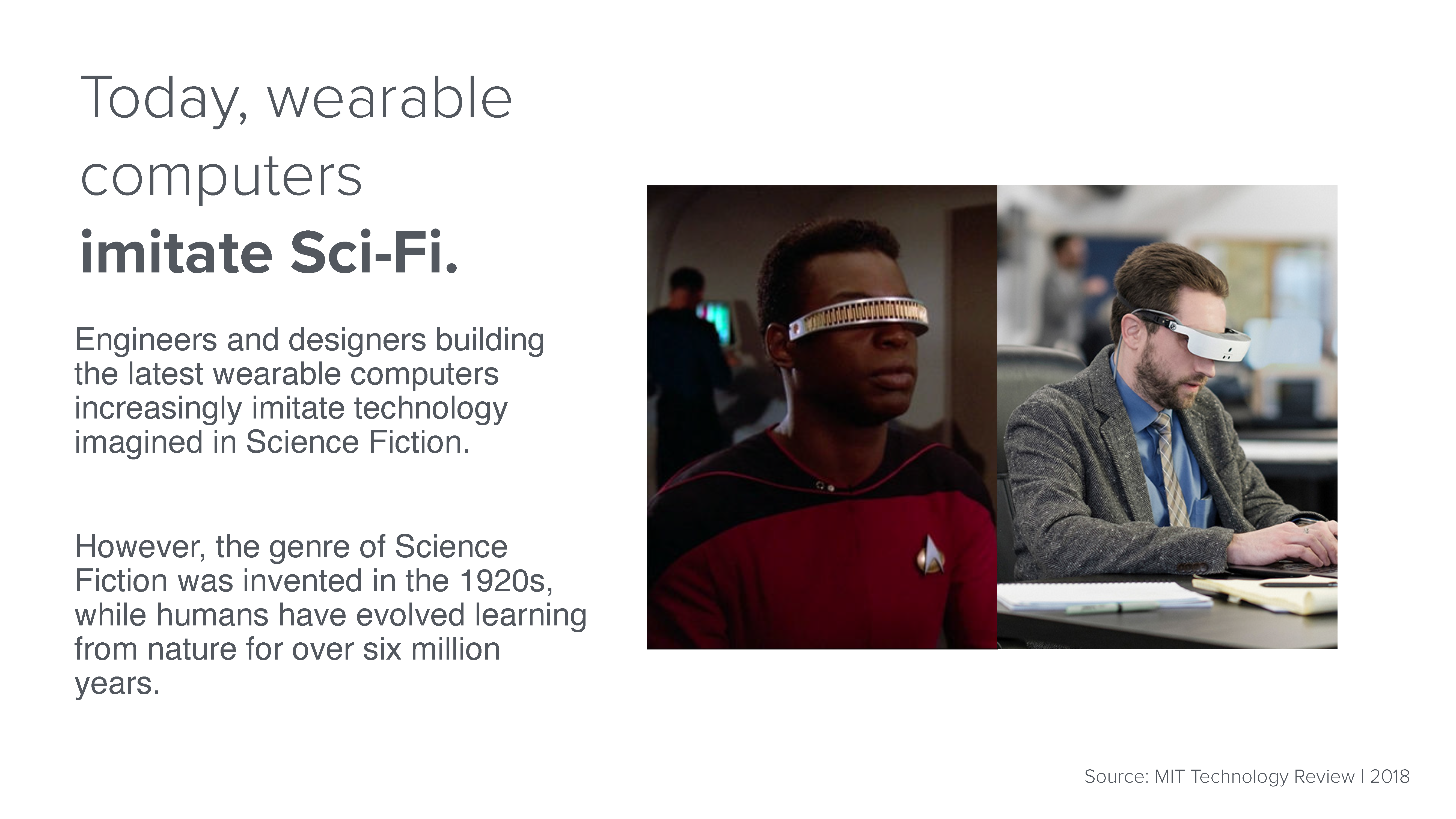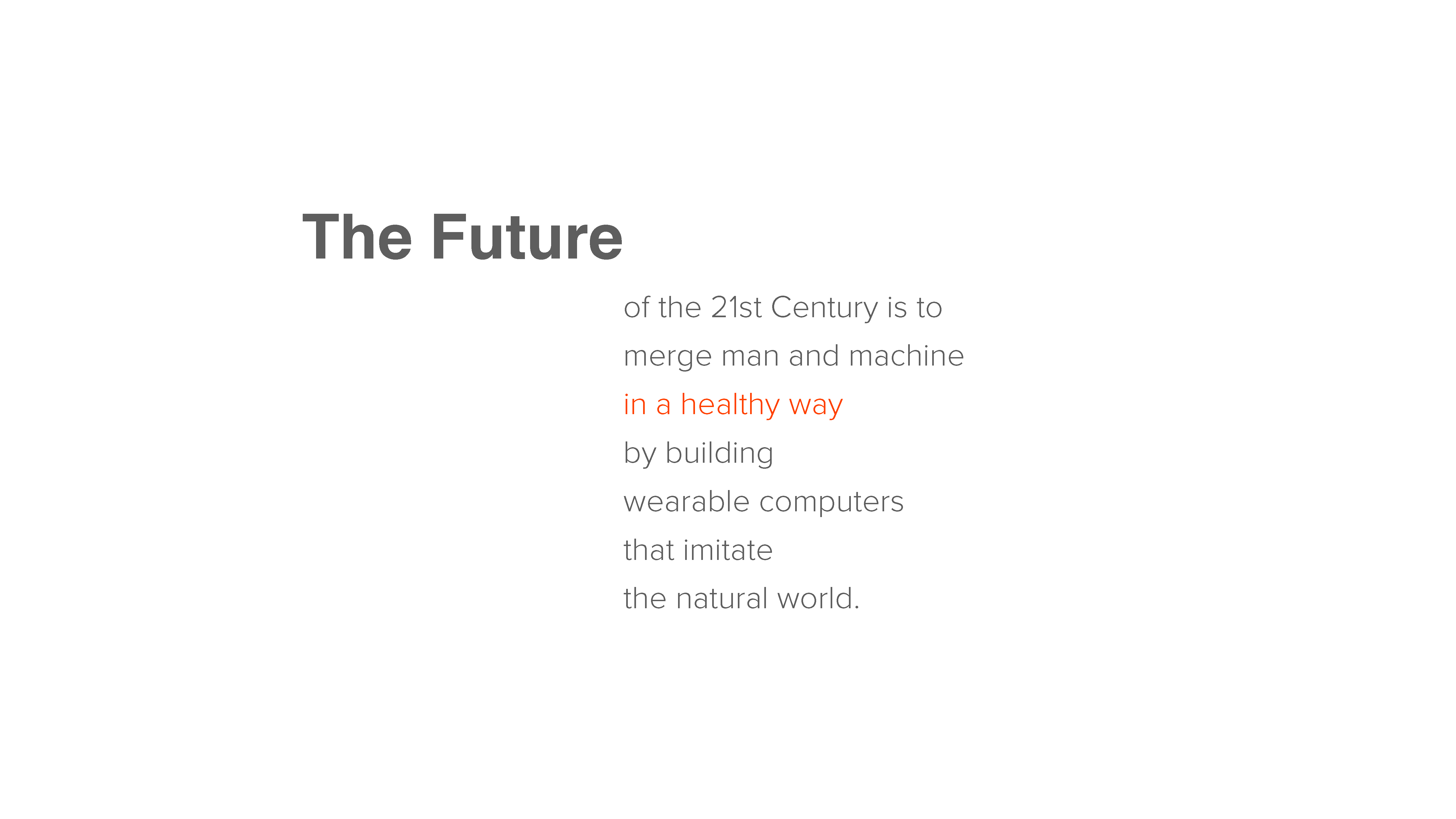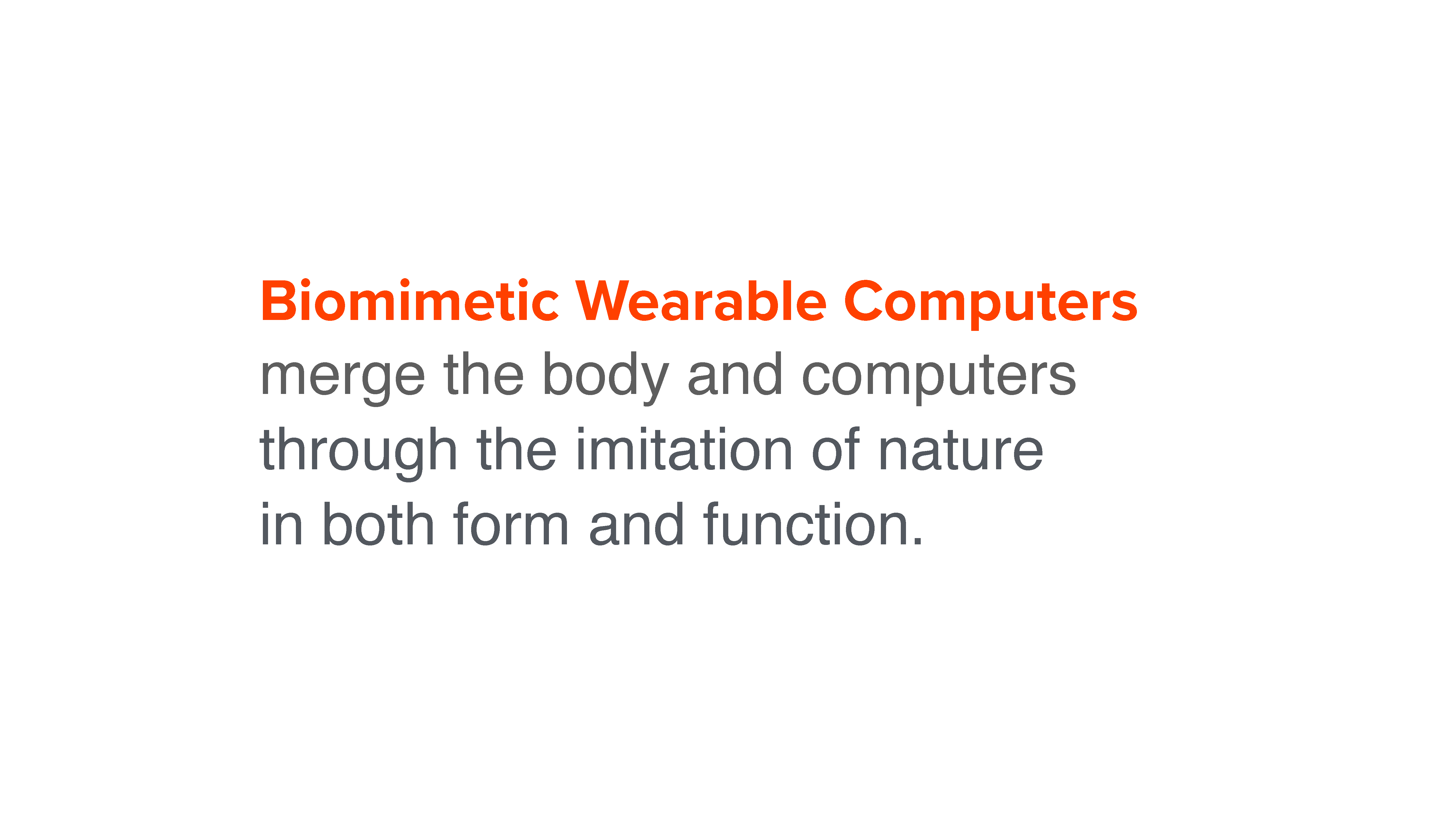Implications and applications¶
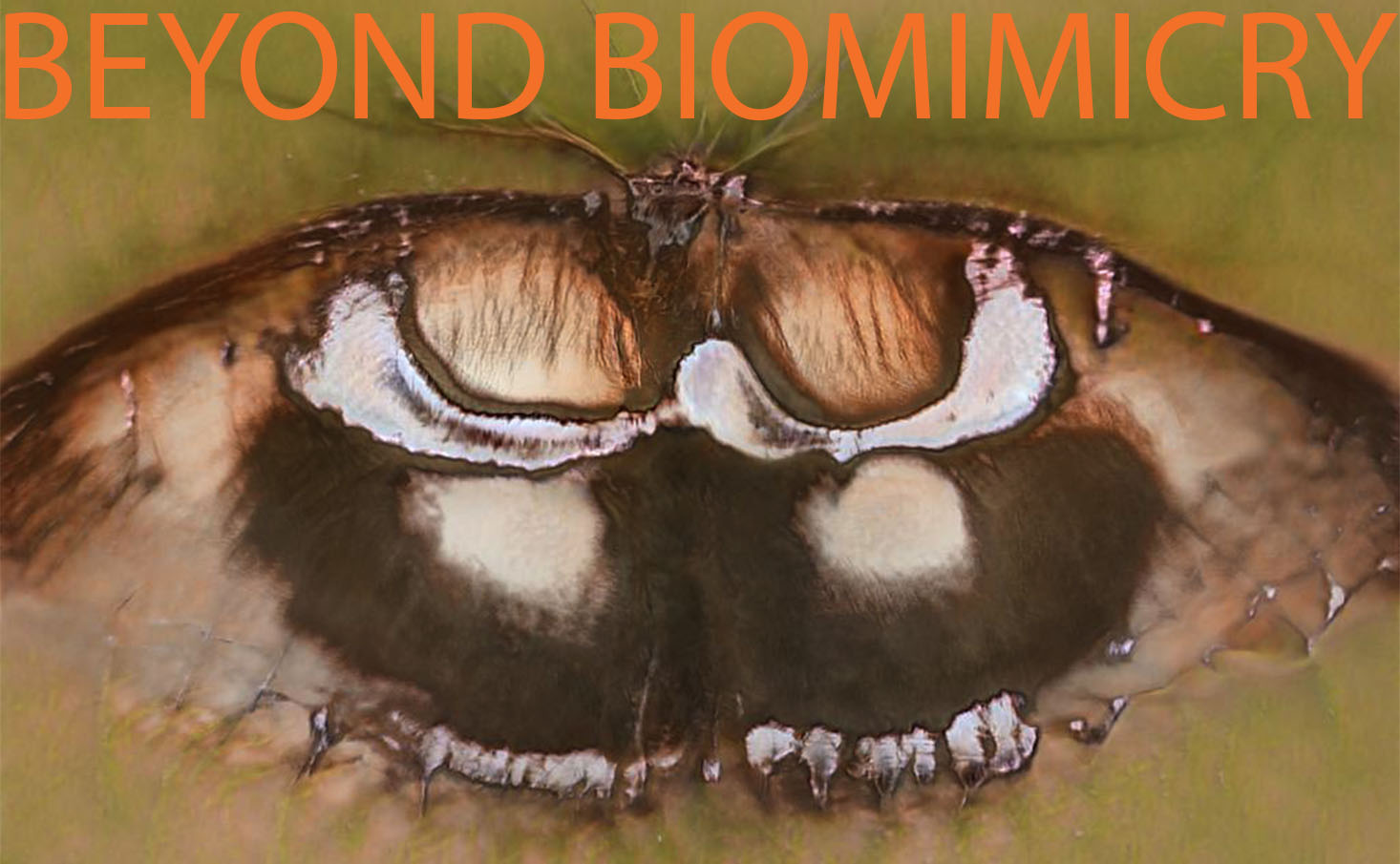
Wearable Computers of today have severe limitations. They resemble fixtures from a Star Trek movie or an Arthur C. Clarke novel. For humans to successfully merge with digital intelligence, we must look to nature, not sci-fi. According to a 2018 article in the MIT Technology Review, research in human-computer interaction mentions science fiction more than ever - this is a problem. If we don’t fundamentally rethink our interface with technology, our bodies will ultimately reject new technology, akin to a failed organ transplant.
I am interested in rethinking human’s relationship to technology by mimicking nature through new manufacturing techniques and materials. I will explore new input and output methods for technology to create a synergy between man and machine.
This question has been at the center of my practice for years, and you can read more about it at biomimetic.io
I am specifically interested in taking a deep dive into conductive threads and fabrics, to create sensors that can more easily interface with our bodies. I am fascinated with sound, as it has the ability to communicate to our emotional realms, and want to explore creating textile speakers.
I plan to continue with my crystal growing journey, in trying to grow crystal interfaces. I am excited to make the energy in crystals visible through thermochromic inks and audible through conductive paints.
I also plan to continue my explorations with 3D printing on fabric to create flexible interfaces that can house these innovations.
I want to utilize biomimicry in my work and designs, but I also want to go beyond biomimicry. I am interested in creating interspecies collaborations through my work as well. I will be exploring slime molds, mycelium and more. I want to leave this project with a strong understanding of biomorphic computational design in Grasshopper.

